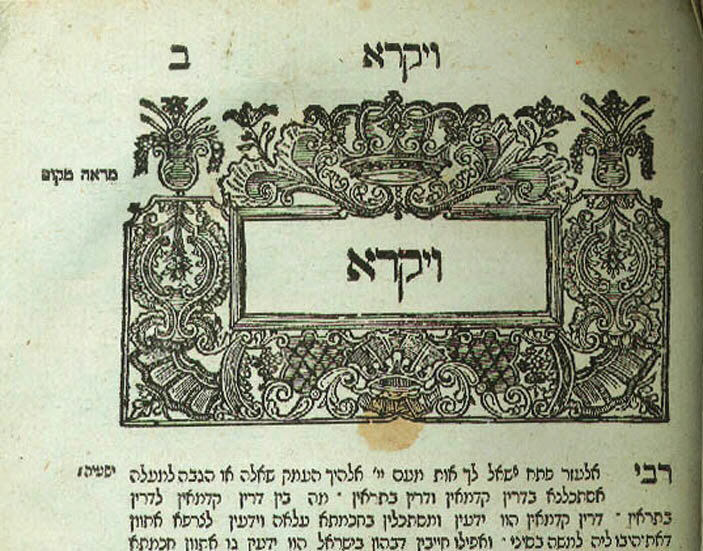Anyone who is asked or expected to speak about the weekly Torah portion knows that the book of Leviticus is always a challenge. There are only two, rather short, stories and many of the laws contained in this priestly part of the Torah – animal, grain and incense offerings, ritual purity and impurity – have not been in practice for close to 2,000 years. In truth, even 4 out of the last 5 portions of the book of Exodus that deal with the building of the tabernacle, priestly clothes and ritual vessels – are tough for those of us searching for relevant meaning in the ancient text.
My silence in the last few weeks is, at least in part, due to the difficulty I’m having in finding objects in the Gross Family Collection that inspire me to find something new and interesting regarding this part of the Torah. And I expect that this will be the case in the coming weeks as well. Though this is not really an excuse. In fact, it only means that I have to work harder and more creatively.
This week’s image, taken from an early edition of Rashi’s (Rabbi Shlomo Yitzhaki, France, 11th century), commentary to the Torah and Five Megilot, is one of those cases where I think I’ll find something interesting, but instead come up empty.
There are many books and other Jewish ritual objects that feature the signs of the Zodiac, and this volume, published in Augsburg, Germany in 1535, and William tells me that this seems to be the first Hebrew one to do so. However, the reason the printer decided to use these particular symbols is a mystery. They appear – just these two – atop the title pages for each of the Five Books of Moses as well as of that of Song of Songs, the first of the Five Megilot that are printed at the back of the book. Perhaps we might have understood that of Leo since lions in various forms are a common decoration on Judaica items. They symbolize the Jewish Messiah who according to tradition will be descended from the house of David, which is part of the tribe of Judah, whose symbol was the lion. If you take into consideration that according to a popular folk tradition Rashi himself was directly descended from King David, then perhaps this would have made sense. But then, what about Scorpio? We might have also understood using Leo if the book’s author (whose name was Shlomo) or publisher (whose name was David) were called Aryeh or Leib (both meaning lion). And even then, what of the scorpion – who’s only symbolic use in the Jewish literary tradition (I’m unaware of any other use in Jewish folk-art outside of the Zodiac signs), is one of suffering and punishment?
It might have meant something to someone involved in the publication of this book, or it might have simply been two images the printer – wishing to somehow decorate the book – had at hand from some other publication, and therefore meant nothing at all. We will probably never know from a historic point of view.
But that doesn’t excuse us from continuing the search for meaning.
Shabbat Shalom



